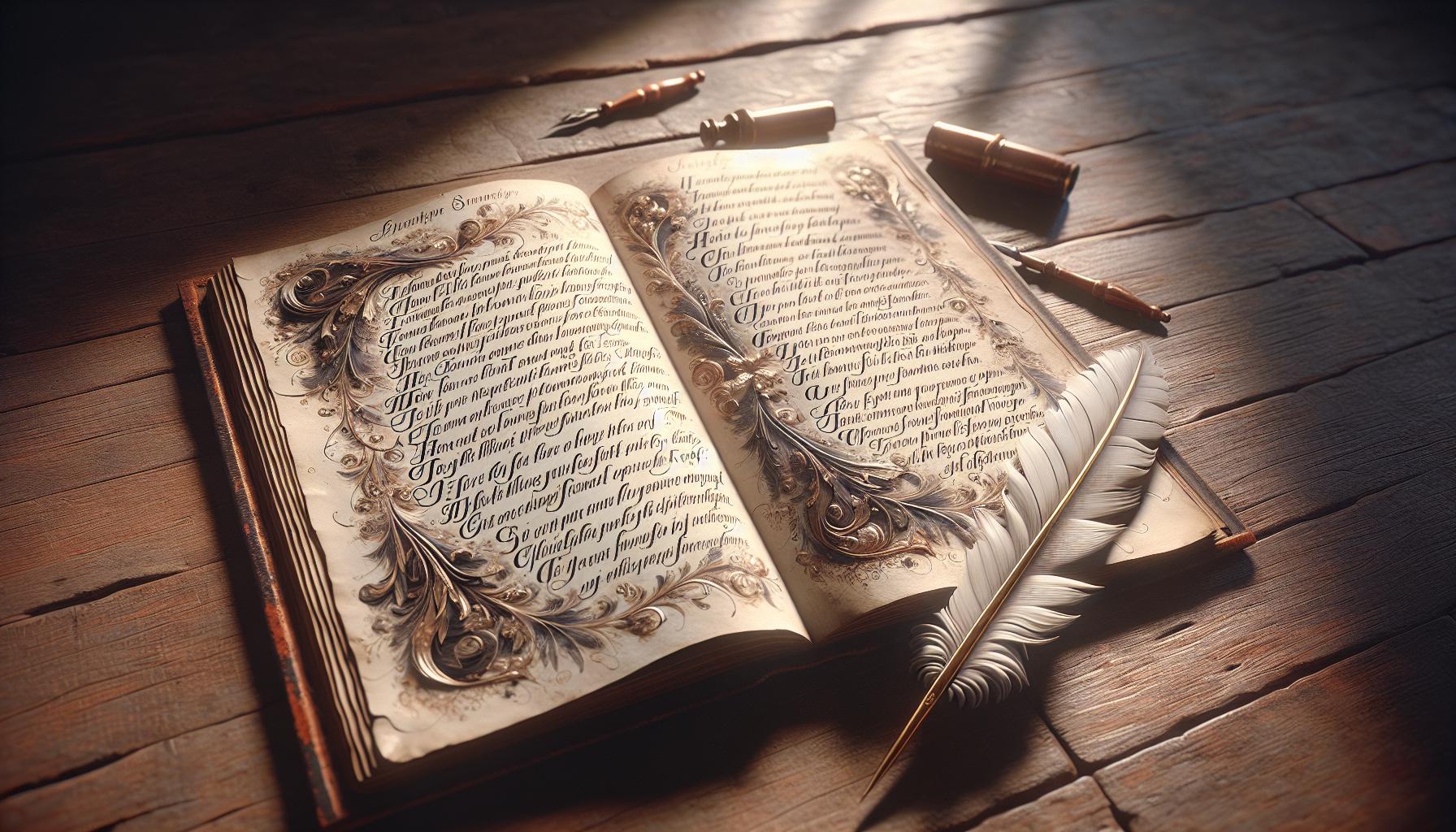Physical Address
304 North Cardinal St.
Dorchester Center, MA 02124
Physical Address
304 North Cardinal St.
Dorchester Center, MA 02124

Lyric poetry stands as one of literature’s most expressive and intimate forms of artistic expression. Like a painter’s brushstroke or a musician’s melody it captures raw emotions personal experiences and profound observations about life in carefully crafted verses.
From ancient Greek odes to modern-day sonnets lyric poetry has evolved while maintaining its core characteristics. Today’s readers often find themselves wondering which elements truly define this poetic style. Whether it’s the musical quality the personal voice or the vivid imagery there’s more to lyric poetry than meets the eye.
Understanding these defining features helps readers appreciate the depth and beauty of lyric poetry while enabling aspiring poets to master this timeless art form. Let’s explore the essential elements that make lyric poetry unique and discover why it continues to captivate audiences across generations.
Lyric poetry expresses personal emotions through rhythmic language patterns. This poetic form captures intimate thoughts feelings within structured verses using specific literary devices.
Lyric poetry incorporates distinct structural elements that define its form:
Lyric poems channel individual experiences into universal themes:
The emotional authenticity in lyric poetry creates resonance with readers while maintaining artistic sophistication through careful crafting of language structure.

Musical elements form the foundation of lyric poetry’s distinctive sound patterns and rhythmic flow. These components enhance the emotional resonance and create a memorable auditory experience for readers.
Lyric poetry incorporates specific metrical patterns that create consistent rhythmic structures. Iambic pentameter appears in traditional English sonnets with five pairs of unstressed-stressed syllables per line. Trochaic meter reverses this pattern with stressed-unstressed pairs. Anapestic meter uses two unstressed syllables followed by a stressed one, creating a galloping rhythm. Poets select these patterns to match their emotional themes:
Sound devices in lyric poetry create musical qualities through deliberate arrangement of words and sounds. Alliteration repeats initial consonant sounds in nearby words. Assonance echoes similar vowel sounds throughout lines. Common sound patterns include:
These sonic techniques combine to establish memorable patterns that enhance the poem’s emotional impact through carefully crafted musical elements.
Lyric poetry employs vivid imagery and figurative language to create lasting mental pictures that resonate with readers. These elements transform abstract emotions into concrete sensory experiences through carefully chosen words and literary devices.
Metaphors enhance lyric poetry by creating direct connections between emotions and tangible objects. Poets use metaphors to compare love to a rose, grief to a heavy stone or hope to a bright star. Similes employ “like” or “as” comparisons to build relatable imagery, such as describing tears falling “like rain” or a heart beating “as swift as a hummingbird’s wings.” These comparisons deepen the emotional impact by linking abstract feelings to familiar physical experiences. Complex emotional states become accessible through carefully crafted metaphorical language that bridges the gap between internal experiences and external reality.
Sensory details engage readers through specific descriptions that activate multiple senses simultaneously. Lyric poets incorporate:
The combination of these sensory elements creates an immersive experience that brings the poet’s emotional landscape to life. Rich sensory language transforms abstract feelings into vivid, tangible moments that readers can experience alongside the poet.
Lyric poetry employs distinct structural components that create a harmonious balance between form and emotional expression. These elements work together to enhance the poem’s impact through organized patterns and deliberate variations.
Lyric poems feature organized stanza arrangements that establish rhythm and flow. Common stanza patterns include:
Each stanza type creates distinct emotional effects:
Line lengths in lyric poetry serve specific artistic purposes:
Lyric poetry centers around distinct thematic elements that shape its emotional resonance. These components create a bridge between individual expression and shared human experiences.
Personal experiences form the foundation of lyric poetry’s narrative structure. Poets transform specific moments—a childhood memory, a romantic encounter, a loss—into verse that captures intimate details with precision. The writing often includes concrete details like specific locations, times of day, weather conditions or physical sensations that ground the poem in reality. Contemporary poets like Sharon Olds demonstrate this technique in works that explore family dynamics through detailed observations of everyday moments. Mary Oliver’s nature poems exemplify how personal encounters with wildlife or landscapes translate into universal meditations on existence.
Lyric poetry stands as a powerful medium that weaves together personal emotions structured forms and musical elements. Its enduring appeal lies in the masterful combination of imagery figurative language and rhythmic patterns that create an immersive experience for readers.
Through carefully crafted verses poets transform individual experiences into universal themes that resonate across time and cultures. The interplay of sound devices structural elements and vivid imagery continues to make lyric poetry a vital form of artistic expression in contemporary literature.
Understanding these essential features enables both readers and writers to fully appreciate and engage with this timeless art form that captures the depth of human experience through the power of words.